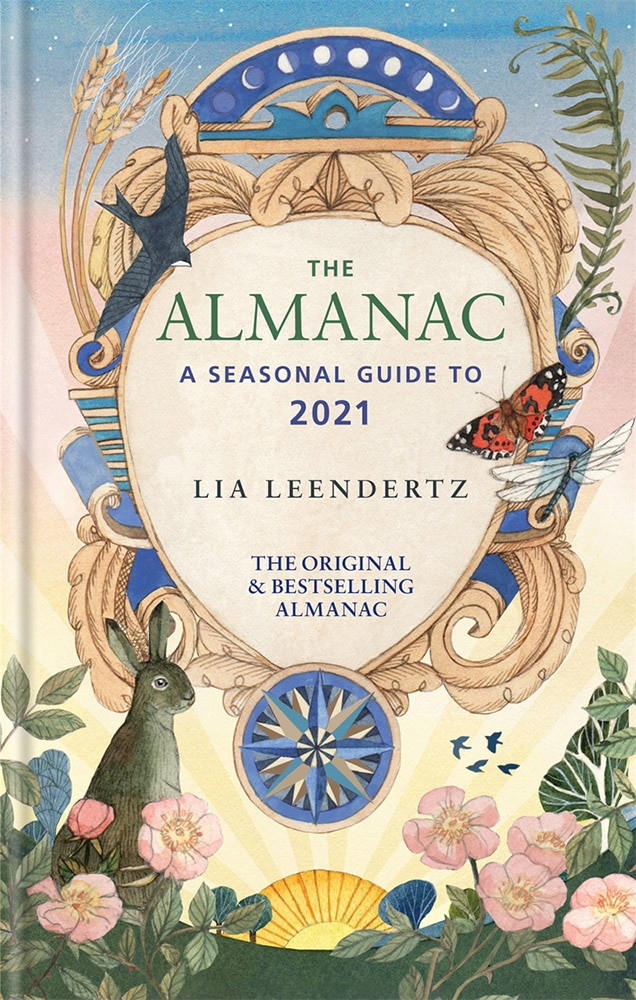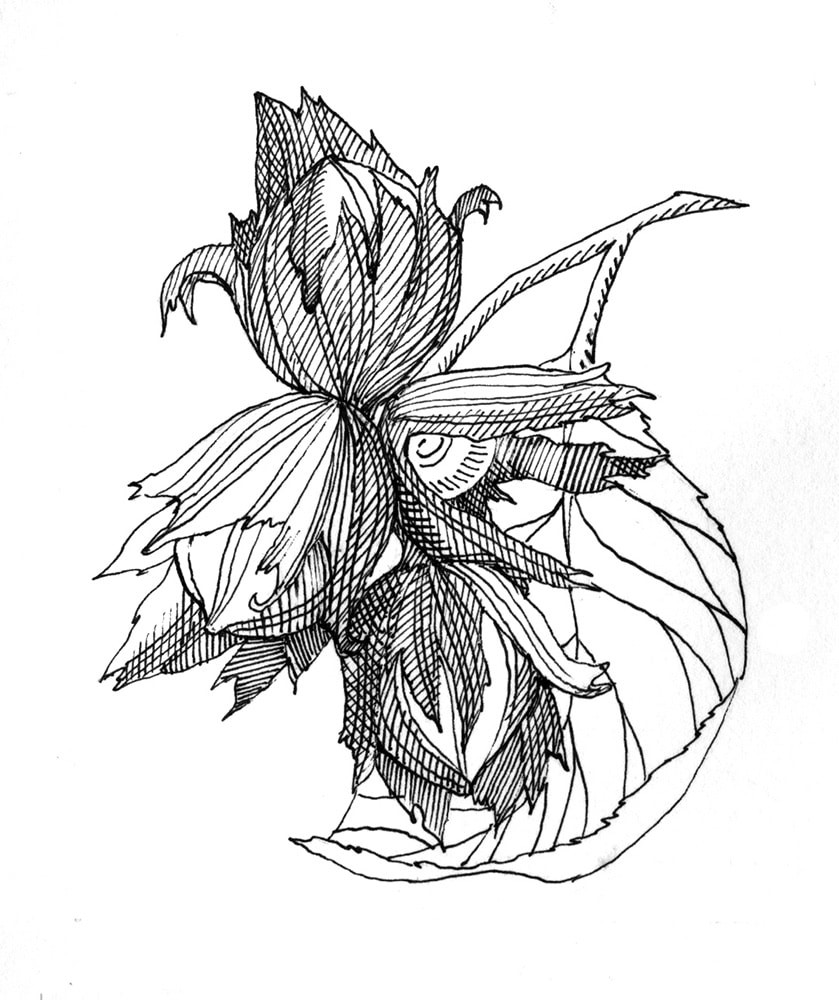Autumn almanac
Counting Cerys Matthews and Sir Bob Geldof as fans, Lia Leendertz’s annual Almanac seasonal guides – a reinvention of the traditional rural almanac – have become the bestselling almanac in the market. Helping us reconnect with the natural world and changing seasons, they guide us through moon phases, garden tasks, gathering wild food, seasonal recipes, sunrise and tide tables, migrations, shanties and even simple pointers on navigating by the stars. Below is an evocative yet practical taste of autumn from the 2021 Almanac (out now).
Illustrations by Helen Cann

September garden meditation
We have reached another tipping point. This month sees the autumnal equinox, the moment after which the nights will be longer than the days. Stand in the garden and think about how the spot in which you are standing is tipping away from the sun into the darker half of the year. Your garden knows it, and anticipates it. What has changed? Can you feel the nip in the air? A slight chill against your skin?
Seeds are forming and falling to the earth to lie dormant through the long, cold months ahead, waiting for spring. Reproduction is being ensured everywhere you look, but so is survival. Know that hedgehogs, snuffling around your garden at night, are gorging on the bounty of the moment, fattening up for winter, and other small mammals are tucking away your berries and making cosy winter homes for themselves.
Think about how your garden’s role is about to change; it will soon become a haven and a refuge. Notice how most of your plants still appear to be soldiering on, but there is a change. They are no longer actively growing. All activity has been shifted now to ripening – of fruits, yes, but also of stems and leaves. Everything is starting to toughen up and shut down.
Navigating by the stars, sun and moon
Use sun and moon rises and sets
This is barely a method, more a little basic solar and lunar knowledge that might help you get your bearing, particularly if you manage to see the sun or the moon rising or setting. First, know that the sun and moon follow roughly the same path across the sky: they rise in the east, track across the southern sky and set in the west. The exact point at which they rise and set changes through the year, though, by 40 degrees: it is only at the equinoxes in March and September that they rise and set due east and due west, and by midsummer the sun rises at almost northeast and at midwinter at almost southeast.

Find your direction from any star
You know how it is: you’re out in the wilderness, hiking through the night, and your phone runs out of battery. You know there’s a cosy cabin and some hot soup to the northwest, but which way is northwest? Never fear, for as long as it is a clear night you can use any bright star to work out your direction.
Find two straight sticks, one about 15cm longer than the other, and then sit or crouch on the ground. Push the shorter stick into the ground just in front of you, then choose any bright star in the sky and line it up with the top of the stick and push the second, longer stick into the ground a little way behind the first stick so that the top of it lines up, too. This will set your star’s position and you will be able to find it again as long as you return to roughly the same
position.
After five or ten minutes, check your homemade ‘sight’ again. If the star appears to have moved to the left you are facing north, or if to the right you are facing south. If it has risen you are looking east, and if it has sunk you are looking west.

Romani recipe for September – Hazelnut bake
The hedgerows are full of hazelnuts just ready for harvesting, and this is a recipe to use up a glut of them. (Recipe based on the research of Romani and Traveller historian Robert Dawson.)
Mash 450g cooked potatoes with a little milk and 450g shelled and crushed hazelnuts, a beaten egg and salt and pepper. Form into little balls and place on a well-greased baking tray, then cook in a Dutch oven over a medium heat, or bake in a moderate oven, until brown, basting with a little hot fat now and then.
In season
In the hedgerows, woods and fields
Edible wild flowers: Meadowsweet, nasturtium (flowers and seeds)
Wild fruits and nuts: Bilberry, blackberry, crab apple, elderberry, juniper berries, rosehips, rowan berries, damsons, haws, cobnuts, hazelnuts, walnuts
Roots: Alexanders, dandelion, horseradish, Jerusalem artichoke, lovage, rampion, wild garlic
Game: Hare, mallard, partridge, rabbit, grouse, ptarmigan, snipe, venison, wood pigeon
From the seashore and rivers
Fish and shellfish: Eel, mussels, oysters, black bream, brown crab, herring, lobster, mackerel, turbot, scallops, hake, megrim sole, sardines, salmon

From the kitchen garden
Vegetables: Tomatoes, aubergines, chillies, sweet peppers, runner beans, French beans, peas, beetroot, calabrese, cabbages, carrots, cauliflower, chard, courgettes, cucumber, endive, fennel, garlic, kale, leeks, lettuce, onions, spring onions, shallots, swede, sweetcorn, Oriental leaves, pumpkins, winter squash, wild rocket, spinach, turnips
Fruits and nuts: Apples, pears, loganberries, autumn raspberries, blackberries, plums, redcurrants, cobnuts
Herbs: Basil, mint, dill, oregano, thyme, marjoram
The Almanac: A Seasonal Guide to 2021 by Lia Leendertz, published by Mitchell Beazley. RRP £10
Available from all good book shops or buy online.